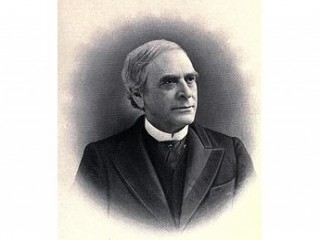
George Henry Corliss biography
Date of birth : 1817-06-02
Date of death : 1888-02-21
Birthplace : Easton, New York, United States
Nationality : American
Category : Science and Technology
Last modified : 2011-09-29
Credited as : shoemaker, inventor, boot-stitching machine
0 votes so far
He gained his greatest fame at Philadelphia's Centennial Exhibition in 1876, where a 1600-horsepower, 700-ton steam engine of Corliss's design provided all the power for the fair's entire six-month run -- including power for the 8,000 smaller machines displayed there. Prior to its construction, experts had predicted that the machine could not possibly work; during the fair's run Atlantic Monthly described the machine as "the true evidence of man's creative powers. Here is Prometheus Unbound". In daily manufacturing use, the Corliss steam engine was an extremely efficient design, and the last of his company's machines remained in industrial service for nearly a century after the inventor's death.
His brother William was also an inventor of some renown, who patented a spherical safe that was especially difficult for burglars to crack, and was used in many banks. His niece, Mary Emma Corliss, married New York state Senator Edgar T. Brackett, and became the mother of screenwriter Charles Brackett.
Corliss was also active within the community. He was elected three consecutive times to the Rhode Island General Assembly as the Representative from North Providence, his term of service including the three years 1868-69-70. In 1876 he was chosen presidential elector, casting his vote for President Hayes. In the matter of his religious belief he was a Congregationalist, and attended the Charles Street Church in Providence from the time of its organization. He was keenly interested in the cause of religion and gave liberally both to his own and to other churches.
Corliss' 1849 patent expired in 1870 after it was extended by U.S. Patent reissue 200 on May 13, 1851 and U.S. Patent reissues 758 and 763 on July 12, 1859. After 1870, numerous other companies began to manufacture Corliss engines. Among them, the William A. Harris Steam Engine Company, the Worthington Pump and Machinery Company, and Allis-Chalmers. In general, these machines were referred to as "Corliss" engines regardless of who made them. The "Corliss-type" engine became particularly popular in Europe. Amusingly, Corliss received the Grand Diploma of Honor by the Vienna Exposition at Vienna in 1873, although he was not even an exhibitor.
Another honor, perhaps the greatest of all was given to him by the Institute of France by public proclamation, March 10, 1879, of the Montyon prize for the year 1878, the most coveted prize for mechanical achievement awarded in Europe. He received this honor by a peculiar coincidence, on the thirtieth anniversary of the granting of his first patent. In 1886, the King of Belgium made Corliss and officer in the Order of Leopold.
Despite the competition, Corliss would continue to remain active within his company, directing changes to his basic design as market or customer needs dictated.
Corliss died on February 21, 1888 at the age of 70. He is buried at Swan Point Cemetery in Providence, with his second wife Emily.
The Corliss Steam Engine Company was purchased by the International Power Company in 1900. In 1905 it was purchased by the American and British Manufacturing Company. In 1925 the company merged into Franklin Machine Company.
The house he built in 1875 on the east side of Providence, now known as the Corliss-Brackett House, and is part of Brown University. Corliss Street in Providence, located near the former site of the Corliss factory is also named in his honor, as is Corliss High School in Chicago, Illinois.
Corliss was inducted into the National Inventors Hall of Fame in 2006.
















